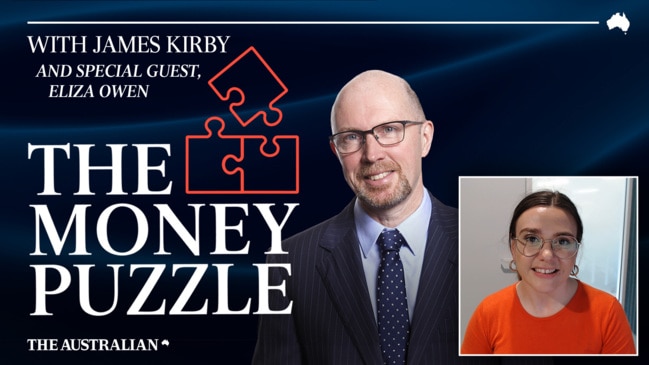Self-managed super’s revival is well and truly under way and it’s not just among the over-60s

Some 19,541 new SMSFs were established last financial year, which was a nine-fold increase compared with five years ago when only 2103 new SMSFs were created.
Although SMSFs have traditionally been viewed as a vehicle for the wealthy, Australian Taxation Office data indicates there is an increasing number of younger trustees coming through who have not only brought new money into the sector, but have also shaken up the typical mix of SMSF assets.
Currently, 78 per cent of existing SMSF members are over the age of 50 and have an average SMSF balance of $1,450,642.
That said, the median balance of an SMSF is much lower at $826,299. This indicates there is a small number of SMSFs with enormous balances that skew the average higher. We do know that the largest single SMSF has a balance of more than $500m so that probably has something to do with it.
Compared with their counterparts, the SMSF sector is larger than retail super funds but smaller than industry super. However, this may change in the future as younger people continue to move away from retail and industry super and seek the increased level of investment flexibility that can be achieved from a SMSF.
Around 63.8 per cent of new SMSF members are under the age of 50 and 90 per cent of new SMSF members are under the age of 60.
Over the past five years the total level of assets in the SMSF sector have increased by 32 per cent. This is partially due to the investment returns of assets and partially due to SMSF trustees rolling money in and making ongoing contributions.

When breaking down how SMSF trustees invest their funds, some interesting trends emerge.
SMSF trustees allocate 29 per cent of fund assets to Australian shares, and hold an average of 17 per cent of the fund in cash and term deposits. Although the exposure to Australian shares has been stable and its allocation is in line with a balanced to growth risk profile, more recently SMSF trustees have not been as willing to hold large cash balances and have been moving their cash into other growth-based assets.
Exposure to overseas shares is only 1.7 per cent of the typical SMSF fund portfolio. However, this has increased by 91 per cent over the past five years, indicating the younger trustees are more willing to seek out high-growth investment opportunities outside of Australia. Similarly, the take-up of overseas managed funds has increased by 88 per cent for SMSFs during the past five years.
Cryptocurrency exposure is up 400 per cent in recent years but still only forms 0.1 per cent of total SMSF assets. SMSF trustees have also shown an increase in interest in private equity and venture capital investments, with exposure to unlisted shares increasing by 52 per cent over the past five years: It is now 1.5 per cent of SMSF assets.
When it comes to physical property assets, SMSF trustees favour commercial property over residential property and ATO statistics indicate that 10 per cent of SMSF assets are invested in commercial property compared with only 6 per cent invested in residential property.
Interestingly the average mum-and-dad investor will generally hold residential investment property in their personal name, yet when it comes to SMSF investing, commercial property is almost twice as popular as residential property investment.
Trustees who borrow money to acquire property via limited recourse borrowing arrangements (LRBAs) have a current aggregate debt level equal to 44 per cent of all SMSF property values. And although the uptake of SMSF loans has been stable in recent times, rising interest rates and limited choice of lenders will be ongoing headwinds for SMSF lending.
ATO statistics indicate that SMSF trustees are also collecting more in recent years. The category of “collectibles”, which includes investments in motor vehicles, art and wine, has increased by almost 60 per cent over the past five years, potentially a side effect of the Covid-19 lockdowns when many people had more time on their hands to research and invest in this category.
That said, collectibles still only represent 0.1 per cent of total SMSF assets and require a lot of ongoing administration to maintain the assets in a compliant manner.
From July 1, 2021 SMSF membership limits were expanded so that a fund could have up to six members. Looking back since the change was introduced, the uptake has been slow with only 0.1 per cent of SMSFs now having five members and less than 0.1 per cent of SMSFs having six members.
The most popular format remains to be a dual member SMSF; 68 per cent of SMSFs have two members followed by single member SMSFs which make up a quarter of all SMSFs.
As the number of younger SMSF trustees grows, the ATO will need to continue to support trustees to ensure SMSF compliance.
A 2020 Queensland University of Technology study found that 50 per cent of SMSF trustees had a low level of financial literacy and only 10 per cent had a high level of financial literacy, although such conclusions are wide open to debate.
But it is clear that SMSF trustees are using the benefits of SMSFs and holding a wide variety of investments that cannot be purchased within a retail and industry super fund – namely unlisted shares and trusts, collectibles, cryptocurrency, physical property assets and borrowing.
James Gerrard is principal and director of Sydney financial planning firm www.financialadvisor.com.au







Industry funds appear to be making a play for more power but self-managed super funds continue to be an increasingly popular retirement vehicle.